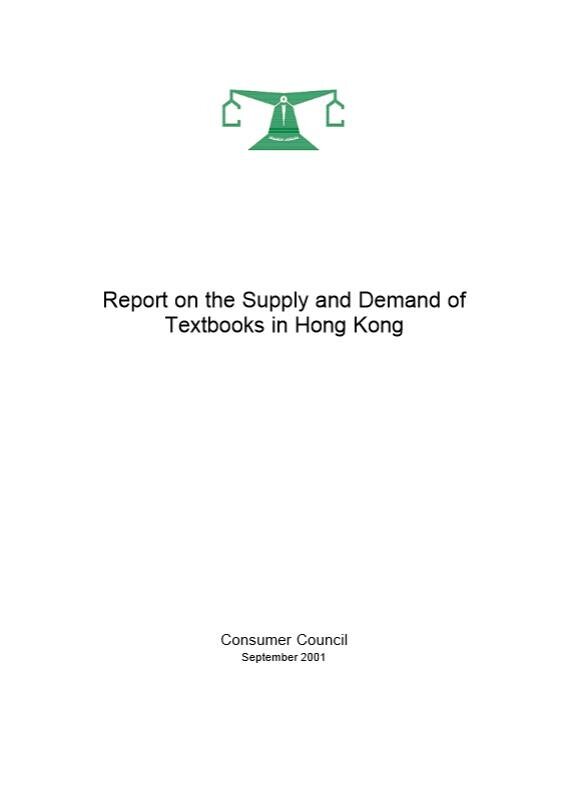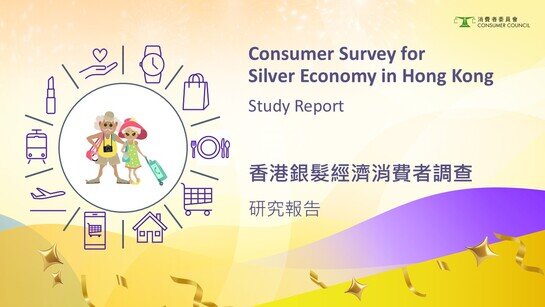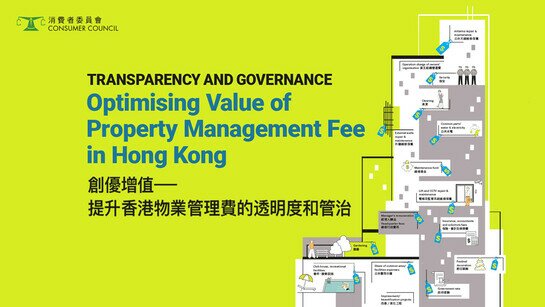
Introduction
- The Consumer Council has been concerned with the textbook industry for over twenty seven years of its existence. The work undertaken has covered:
- the monitoring of prices (due to the burden it places on parents);
- examining the practice of publishers revising textbooks (and the effect this has on making textbooks redundant);
- the practice of retailing textbooks (the standard discounts that are made available), and
- the incentives and donations that are offered by publishers to influence schools' selection decisions.
- This Council research paper follows previous Council studies into the above, and expands the scope of research by providing an overview of the supply and demand for textbooks, examining government policy, and making a number of recommendations and policy suggestions.
- The issues identified for consideration are:
- what are the structural and competitive features of the relevant markets;
- to what extent is government educational policy affecting the structure and competitiveness of the market;
- what if any detrimental effects to the welfare of consumers/ schools arise from the current market structure; and
- what improvements can be made to maintain an adequate supply of high quality and affordable primary and secondary school textbooks.
- The report is divided into the following sections.
- Section One - Introduction
- Section Two - Executive Summary and Recommendations
- Section Three - Supply and Demand Characteristics
- Section Four - The Publisher Market
- Section Five - The Retail Market
- Section Six - Government Policies
- Section Seven - Textbook Selection
- Section Eight - Overseas Examples of Textbook Policy
- Section Nine - Textbook Loan Library Option
- The report makes three major sets of recommendations
- Improving the existing textbook market practice;
- Change the existing market demand and supply features;
- Encourage the further use of information technology in teaching.
Industry overview
- The information outlined in the Council's report highlights two important characteristics of the textbook industry in Hong Kong.
- The first concerns the economies of scope and scale for the textbook industry. There is limited opportunity for publishers to market Hong Kong targeted textbooks outside the SAR. The consequence of this is that the costs to publishers in meeting demand will be borne only by Hong Kong consumers.
- The second characteristic is that under the current system the demand for textbooks is different from demand for many other products, where end users exercise choice over the products to be consumed. In the case of textbooks, schools exercise choice, and once a textbook has been chosen from a Government recommended list, the end user, i.e. the student, has no other course of action but to purchase that particular textbook.
Changing the existing demand and supply features
- The Council considers that it is in relation to this particular demand characteristic that change is required, in order to bring about efficient purchasing decisions. This is particularly important because Government is playing an increasing role in using public funds for the purchase of textbooks.
- Government exercises influence in the industry through developing an education curriculum, recommending textbooks for schools to choose from, and issuing guidelines for schools to follow in selecting textbooks. Importantly, it also administers a scheme of assistance for students in financial need, by providing those students with a subsidy to purchase textbooks. The cost of administering the scheme is substantial, increasing from a level of $94M in 1996/97, to $341M in 2000/01. The breadth of coverage of the scheme is also significant. At present, almost 40% of the student population are recipients of financial assistance to purchase textbooks. Those students receive either a full grant, or half the amount required to purchase the textbooks chosen by their particular schools.
- However, while the Government plays an important part in the consumption of textbooks, it exercises no control over deciding whether the cost of purchasing a particular textbook is justified. In the context of this free market, ED does give guidelines to schools on selection of textbooks bearing in mind quality of textbooks and financial burden of parents.
- Nevertheless, it is understandable that when schools are faced with making a choice within a Recommended Textbook List, the primary concern will be intellectual content and presentation. This is in order to satisfy the school's main concern with the textbook as a valuable educational resource. It is also understandable that because the party who pays for the textbook is absent from the selection process (i.e. either indirectly by Government or directly by students) the pressure to consider price in the selection process will be marginal; if at all.
Extending textbook life and transferring roles
- In this regard, the Council considers that the Government has to consider a major revaluation of the role it plays in the industry. In particular, how it maximizes its current use of public funding to subsidize the purchase of textbooks, and its level of involvement in the textbook purchasing decision. The Council considers that the Government has the ability to increase the efficient functioning of the market approach that is currently used to distribute textbooks, by undertaking the following.
- First, to direct current and future Government financial assistance used in funding textbook purchases, towards the creation of textbook loan libraries. This would entail the creation of an adequate store of textbooks that would be made available for loan to students during the schooling period, and that would be kept for a number of years for use by other students in subsequent schooling periods.
- Second, to transfer responsibility for the actual purchase of textbooks away from students, and onto schools themselves. For example, by providing schools with periodic financial grants that they can use to create and maintain stocks of textbooks for use by their students.
- First, to direct current and future Government financial assistance used in funding textbook purchases, towards the creation of textbook loan libraries. This would entail the creation of an adequate store of textbooks that would be made available for loan to students during the schooling period, and that would be kept for a number of years for use by other students in subsequent schooling periods.
- The Council considers that transferring responsibility for making textbook purchases to schools will redress the anomaly where existing purchasers play no part in the selection process. The current system of distribution is based on the notion of a competitive marketplace. A competitive marketplace assumes that informed buyers make decisions on sources of supply taking into account the three dimensions of price, product range, and product quality. Under the current system the normal condition of a buyer in selecting a product where there is pressure to choose the lowest price (all other factors being satisfied) is lacking. The proposal by the Council, as noted above, would introduce this necessary condition and thereby resolve the required circumstances for a market to function as efficiently as possible. In addition, schools would also be more likely to consider price seriously if they could benefit from savings in the textbook financial grant, e.g. savings from this grant could be re-deployed by the school for other educational purposes in the school.
An incremental approach and variations
- The report outlines in detail the current cost of administering financial assistance for textbook purchases. The section also outlines one option for using funds currently assigned to provide financial assistance, to create stores of textbooks for loan to students. There are a number of permutations in which the concept of creating a store of textbooks for loan to students can be brought into fruition.
- In view of the novelty of this concept (at least as far as Hong Kong is concerned) it may be preferable to undertake a pilot study where its effects can be closely studied. This is particularly important because the extended life of textbooks will mean a reduction in the volume of sales; with a corresponding impact on publishers and retailers. Taking an incremental approach would therefore provide publishers and retailers with time to adjust to the changes and lead to a more managed restructuring of industry.
Pilot study
- The Council suggests that loan libraries could be introduced under a pilot scheme in a limited number of schools. Schools could make the textbooks available for students to keep for the duration of the school year and return them for other students to use in succeeding years. Depending on how the scheme is financed, parents could be asked to pay a nominal deposit or rental fee.
- The Council also suggests that savings which schools can make from the funds that are given to them to purchase textbooks for the loan libraries, can be used for other educational purposes. For example, buying reference books for the general school library.
- In the long run the Council expects that all primary and secondary schools will introduce the loan library scheme. The report has put forward one funding option for the government to consider, in which it provides funds to schools to purchase a complete stock of textbooks to cover usage over three years. Under this option it is calculated that parents would only have to pay approximately $100 to $200 per year for the nominal rental fee. Some students may not have to pay the fee at all.
Advantages of loan libraries
- The Council noted that loan libraries have a number of advantages. Applying the concept would extend textbook life by recycling, reduce cost burden on parents/students, and make more efficient use of government funding to create public assets.
- The concept of a loan library is offered by the Council as a means to address a problem of increasing costs of school textbooks, while at the same time, maintaining as much as possible the current freedom of schools to choose textbooks from a wide range of choices. There are further changes that could be contemplated in terms of education policy, that could have an effect on the demand and supply of textbooks.
- The report also summarises different approaches that governments in other jurisdictions take in relation to how textbooks are supplied to satisfy their education policies. These can range from direct government involvement in nominating textbooks and funding all purchases, to allowing a degree of freedom of choice, with limited or no government financial assistance.
- There is therefore, a range of options that the Hong Kong Government can take in regard to school textbook policy. In the final analysis it is up to the Government to decide on how far it should intervene in the market, or whether market based mechanisms should be used in the supply of textbooks at all. It is clear from current levels of Government involvement that education is not a matter that will be left solely to the open market. The Council itself does not consider that the open market is the best means to serve all aspects of an education policy. The task at hand for the Council, given current government policy, is to identify those benefits that a market based approach can bring in terms of lowering costs, increasing choices and maintaining high standards of quality, while at the same time recognizing that the Government has an important role to play.
Improving the industry generally
- In examining the industry as it currently stands, the Council identified a number of matters that should be addressed to improve efficiency. These matters have been identified, and recommendations made, notwithstanding the Council's major recommendation to create loan libraries. Some of the recommendations may become redundant if the loan library concept is taken on board, while others will be important regardless. On the other hand, if loan libraries are constructed on a pilot basis, then there will in effect be two systems for some period of time. In these circumstances, the Council's other recommendations will be relevant for those parties involved with maintaining the current system of textbook supply and demand. The recommendations are as follows.
Publisher recommendations
- Publishers should be further encouraged to produce addenda to update minor revisions in textbook contents. To extend the reusability of textbooks, publishers should also consider separating exercise sheets, workbooks, and supplementary materials that students need to fill in or write on, from textbooks. These measures would assist the viability of a second-hand textbook market.
- Publishers should furnish price lists (for both new editions and revised editions) for schools' consideration during the textbook selection stage, and for the information to be given to ED to put on the Recommended Textbook List for easy reference by teachers.
- Publishers should reduce superfluous pictures, excessive spaces, or unnecessary supplementary exercises in the textbooks. In addition publishers could use loose leaf presentation, to allow for the separation of different textbook sections, so as to reduce the weight burden for students and provide flexibility in future changes.
- Teaching aids that are not an integral part of the textbook, and other items of teaching equipment should be treated as separate from textbooks. Accordingly, separate invoices should be issued to schools for them to purchase the equipment as individualitems.
Government recommendations
- The Education Department should consider the various concerns that publishers have expressed with regard to the lead time allowed for submitting textbooks for approval. In addition, recognition should be given as to the costs incurred by publishers where there are changes to the teaching language used and the teaching method.
- The Education Department could also consider applying a strict needs based approach to the Three-Year Rule for Revised Editions. Approval should not be automatic. Revision should not be approved if there is not sufficient improvement or significant change.
- Consideration could be given to the monitoring of compliance by schools with the various guidelines that Education Department has issued relating to the selection of textbooks. All Education Department frontline staff in contact with schools have a role in advising and monitoring the guidelines. Better dissemination through seminars to school staff involved in selecting textbooks will be helpful.
School recommendations
- Schools should be urged to use their bargaining power, through the selection process, to exercise preference for low cost features in textbooks, including reduction in superfluous pictures or other features that may unnecessarily contribute to high costs of production. Schools could consider enlisting the support and advice of parents associations to assist in this process.
- Schools should indicate prominently that any prices quoted on the book list are for reference only, and that parents are free to purchase textbooks from any booksellers.
- Where schools are involved either directly or indirectly via designated booksellers in the sale of textbooks to students, they should stress to parents and students that purchase from these outlets is discretionary.
- Non-profit making organizations and schools could undertake to organise sales of secondhandtextbooks.
- Wording such as 'optional' or 'for reference only' should be printed on the booklists for non-compulsory books /workbooks. Schools can play a role by providing more copies of these materials in their libraries.
Use of information technology
- Regardless of what policy options are chosen in terms of using market based principles or Government intervention in purchasing hard copy textbooks, greater use of information technology should be explored.
- For example, the Curriculum Development Institute could support schools to devise their own teaching materials, along the lines of web-based learning resources. In the long run, teaching materials could then be tailor-made to match students' learning abilities, and the updating of teaching materials could be greatly facilitated. This implies that the role of the Curriculum Development Institute would gradually evolve from centralised control on curriculum to supportive monitoring of schools in developing a flexible curriculum. Nevertheless, copyright considerations in sharing materials which may be copied or adapted, would need to be taken into account.
- Greater use of the Internet could be made in terms of making soft copies of textbooks available by publishers.
Other comments
- During the course of the study opinions were offered from many interested parties on a range of issues concerning the textbook industry and government policy. The opinions are as follows:
- Introduce loose leaf versions of textbooks to increase the flexibility of textbook use and extend their reusability.
- The government to standardize the publishing of textbooks, or to designate a publisher for each subject.
- The long term solution is for teachers to prepare their own teaching material, or the Education Department to prepare the material themselves for schools to use.
- Schools should not rely solely on hard copy textbooks. Consideration should be given to developing soft copies.
- Because the government already pays for 40% of the student population to purchase textbooks, it should consider whether it should provide free textbooks to all students.
- In consideration of the problems that schools have with storage, consideration should be given to utilizing public library facilities for storage of textbooks if a textbook loan library scheme is developed.
- Not all of the above opinions and recommendations relate to the efficient functioning of markets, but raise issues of general education policy. As such, they are outside the general scope of this study, which is primarily aimed at the demand and supply characteristics of the market for purchase of textbooks.











